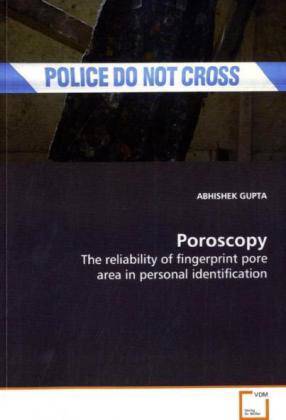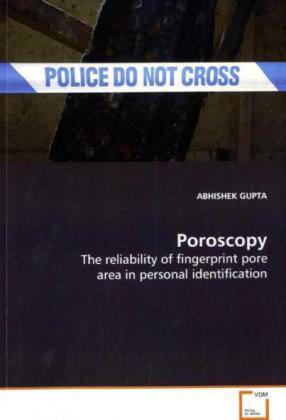
- Afhalen na 1 uur in een winkel met voorraad
- Gratis thuislevering in België vanaf € 30
- Ruim aanbod met 7 miljoen producten
- Afhalen na 1 uur in een winkel met voorraad
- Gratis thuislevering in België vanaf € 30
- Ruim aanbod met 7 miljoen producten
Zoeken
Poroscopy
The reliability of fingerprint pore area in personal identification
Abhishek Gupta
Paperback | Engels
€ 48,45
+ 96 punten
Omschrijving
Fingerprints have been used as a vital tool in
personal identification for over a century due to
their uniqueness and permanence. Despite of the fact
that these are unique and permanent, there have been
occasions when fingerprint science has been
challenged. Recent cases of erroneous identification
in Shirley McKie, Stephan Cowans and Brandon
Mayfield cases raised doubts on the reliability of
fingerprint evidence. This has lead forensic
community to look for extended set features to give
further boost to this vital tool and to further
increase its potential as evidence. One of these
efforts lead to the use of third level features (&
sub-features) in existing identification system.
This book introduces to the readers the authenticity
of third level sub-features, in particular
poroscopy, in personal identification. This book
focuses on:
1.The effect of substrate on the reproducibility of
inked fingerprint pore dimensions
2.Pore area reproducibility in latent prints
developed using Cyanoacrylate and Ninhydrin
development methods
3.Reproducibility of pore area in Direct
microscopic images.
personal identification for over a century due to
their uniqueness and permanence. Despite of the fact
that these are unique and permanent, there have been
occasions when fingerprint science has been
challenged. Recent cases of erroneous identification
in Shirley McKie, Stephan Cowans and Brandon
Mayfield cases raised doubts on the reliability of
fingerprint evidence. This has lead forensic
community to look for extended set features to give
further boost to this vital tool and to further
increase its potential as evidence. One of these
efforts lead to the use of third level features (&
sub-features) in existing identification system.
This book introduces to the readers the authenticity
of third level sub-features, in particular
poroscopy, in personal identification. This book
focuses on:
1.The effect of substrate on the reproducibility of
inked fingerprint pore dimensions
2.Pore area reproducibility in latent prints
developed using Cyanoacrylate and Ninhydrin
development methods
3.Reproducibility of pore area in Direct
microscopic images.
Specificaties
Betrokkenen
- Auteur(s):
- Uitgeverij:
Inhoud
- Aantal bladzijden:
- 120
- Taal:
- Engels
Eigenschappen
- Productcode (EAN):
- 9783639181159
- Uitvoering:
- Paperback
- Afmetingen:
- 150 mm x 220 mm
- Gewicht:
- 176 g

Alleen bij Standaard Boekhandel
+ 96 punten op je klantenkaart van Standaard Boekhandel
Beoordelingen
We publiceren alleen reviews die voldoen aan de voorwaarden voor reviews. Bekijk onze voorwaarden voor reviews.








